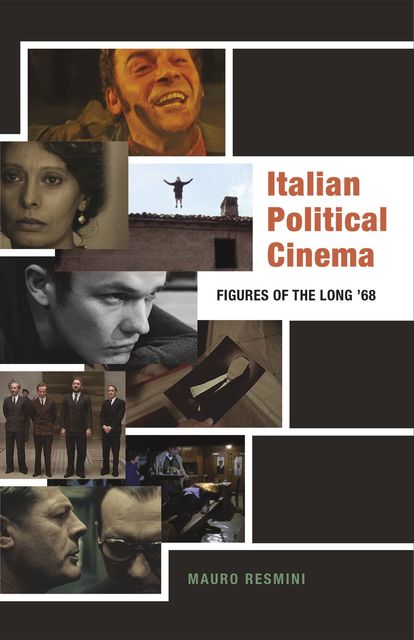Italian Political Cinema
Figures of the Long ’68
Traditionally, the definition of political cinema assumes a relationship between cinema and politics. In contrast to this view, author Mauro Resmini sees this relationship as an impasse. To illustrate this theory, Resmini turns to Italian cinema to explore how films have reinvented the link between popular art and radical politics in Italy from 1968 to the early 1980s, a period of intense political and cultural struggles also known as the long ’68.
Italian Political Cinema conjures a multifaceted, complex portrayal of Italian society. Centered on emblematic figures in Italian cinema, it maps the currents of antagonism and repression that defined this period in the country’s history. Resmini explores how film imagined the possibilities, obstacles, and pitfalls that characterized the Italian long ’68 as a moment of crisis and transition. From workerism to autonomist Marxism to feminism, this book further expands the debate on political cinema with a critical interpretation of influential texts, some of which are currently only available in Italian.
A comprehensive and novel redefinition of political film, Italian Political Cinema introduces its audience to lesser-known directors alongside greats such as Pasolini, Bertolucci, Antonioni, and Bellocchio. Resmini offers access to untranslated work in Italian philosophy, political theory, and film theory, and forcefully advocates for the continued artistic and political relevance of these films in our time.
Background image from The Working Class Goes to Heaven (1971)

Table of Contents
Metadata
- rightsThis book is freely available in an open access edition thanks to TOME (Toward an Open Monograph Ecosystem)—a collaboration of the Association of American Universities, the Association of University Presses, and the Association of Research Libraries—and the generous support of the University of Maryland. Learn more at the TOME website, available at: openmonographs.org.
Portions of chapter 1 and a different version of chapter 2 were published as “The Worker as Figure: On Elio Petri’s The Working Class Goes to Heaven,” Diacritics 46, no. 4 (2019): 72–95; copyright 2018 Cornell University, published with permission by Johns Hopkins University Press. Portions of chapter 7 were published as “Asymmetries of Desire: Salò, or The 120 Days of Sodom,” in Unwatchable, ed. Nicolas Baer, Maggie Hennefeld, Laura Horak, and Gunnar Iversen, 160–64 (New Brunswick, N.J.: Rutgers University Press, 2019).
Copyright 2022 by Mauro Resmini
- isbn978-1-4529-7015-8
- publisherUniversity of Minnesota Press
- publisher placeMinneapolis, MN
- restrictionsItalian Political Cinema: Figures of the Long ’68 is licensed under a Creative Commons Attribution-NonCommercial-NoDerivatives 4.0 International License (CC BY-NC-ND 4.0).
- rights holderMauro Resmini
- doi


